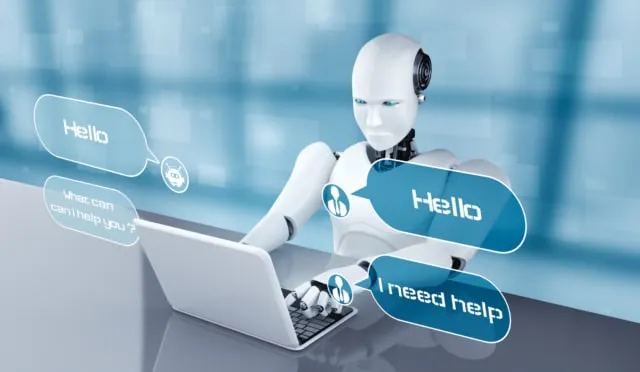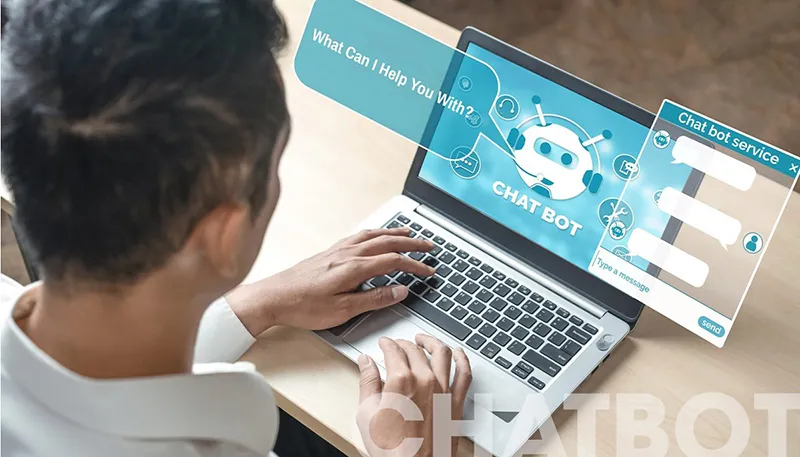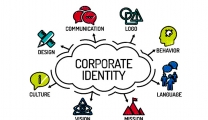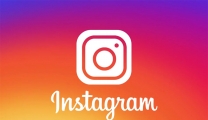What are marketing chatbots?
Marketing chatbots are automated conversational agents that are designed to engage with customers and provide them with personalized marketing experiences. These chatbots use natural language processing and machine learning to understand customer queries and provide relevant responses, recommendations, and promotions.
Chatbots in marketing can be integrated into various messaging platforms such as Facebook Messenger, WhatsApp, or website chatbots, and they can be used to guide customers through the sales funnel, answer frequently asked questions, recommend products, and even facilitate purchases. By providing an engaging and personalized experience, marketing chatbots can help businesses to increase customer engagement and loyalty, improve sales and conversions, and reduce costs associated with human customer service agents.

What are marketing chatbots?
Advantages of marketing chatbots
Improve customer engagement
One of the primary advantages of marketing chatbots is that they can provide customers with immediate and personalized responses to their queries. This can help to improve customer engagement, as users are more likely to interact with a chatbot that can provide them with the information they need in real-time. Additionally, chatbots can help to enhance the customer experience by providing 24/7 support, reducing wait times, and ensuring consistency in the quality of customer service.
Increase customer retention and loyalty
Chatbots for marketing can also be an effective way to increase customer retention and loyalty. By providing personalized recommendations and tailored promotions, chatbots can help to create a sense of connection and loyalty between the customer and the brand. Furthermore, chatbots can help to reduce customer churn by proactively addressing common issues and complaints before they escalate.
Reduce marketing cost
Marketing chatbots are a cost-effective marketing strategy. They can reduce the need for human customer service agents, allowing businesses to save money on salaries and training costs. Additionally, chatbots can handle a high volume of queries simultaneously, making them an efficient solution for businesses looking to scale their customer service operations.
Marketing chatbots are a cost-effective marketing strategy.
How marketing chatbots work
Types of marketing chatbots
There are several types of marketing chatbots, including rule-based chatbots, AI-based chatbots, and hybrid chatbots that combine the two. Rule-based chatbots use a set of predefined rules to determine the appropriate response to a user query, while AI-based chatbots use machine learning algorithms to understand natural language and provide more personalized responses. Hybrid chatbots use a combination of both approaches, allowing businesses to provide a more comprehensive and efficient customer service experience.
Integration with messaging platforms and social media
Marketing chatbots are typically integrated with marketing software platforms, messaging platforms, and social media, allowing businesses to engage with customers across a range of channels. They can also be customized to reflect the branding and personality of the business, providing a more cohesive customer experience.
Data collection and analysis
Data collection and analysis is another important feature of marketing chatbots. Chatbots can collect valuable data on customer preferences, behavior, and engagement, allowing businesses to gain insights into customer needs and tailor their marketing strategies accordingly. This data can also be used on automated marketing platforms to train and improve the performance of the chatbot over time.

Data collection and analysis is an important feature of marketing chatbots.
Best practices for implementing marketing chatbots
Understanding target audience
To ensure the success of a marketing chatbot, businesses should follow a set of best practices when implementing and managing their chatbot. Firstly, it's important to understand the target audience and tailor the chatbot's responses accordingly. This can involve conducting user research and identifying common pain points and queries.
Setting clear goals and objectives
It is important that businesses set clear goals and objectives for their chatbot. This can include improving customer satisfaction, increasing sales, or reducing customer churn. Having a clear understanding of the purpose of the chatbot can help to ensure that it is designed and implemented in a way that meets these goals.

Setting clear goals and objectives for implementing marketing chatbots
Creating engaging conversational flows
Creating engaging conversational flows is essential for a successful marketing chatbot. This involves designing a chatbot that can provide users with a conversational experience that is natural, intuitive, and personalized. This can include using emojis, GIFs, and other multimedia elements to make the conversation more engaging and interactive.
Providing seamless integration with human agents
It is crucial for marketing chatbots to have a smooth integration with human agents, enabling users to effortlessly switch from interacting with the chatbot to engaging with a human agent. This can involve designing a chatbot that can identify when a user's query requires human intervention and transferring the conversation to a human agent, or providing a clear and easy-to-use option for users to connect with a human agent.

It is crucial for marketing chatbots to have a smooth integration with human agents
Case studies of successful marketing chatbots
H&M
There are many examples of companies that have effectively utilized marketing chatbots to improve their customer engagement and marketing strategies. One such example is H&M, which launched a chatbot on Kik that allowed users to browse and purchase products directly from the chatbot. The chatbot used AI to understand user preferences and provide personalized recommendations, resulting in a significant increase in sales and customer engagement.
Sephora
Another example is Sephora, which launched a chatbot on Facebook Messenger that provided users with personalized makeup recommendations and tutorials. The chatbot used AI to understand user preferences and provided a conversational and engaging experience that helped to increase customer loyalty and retention.












Replies to This Discussion